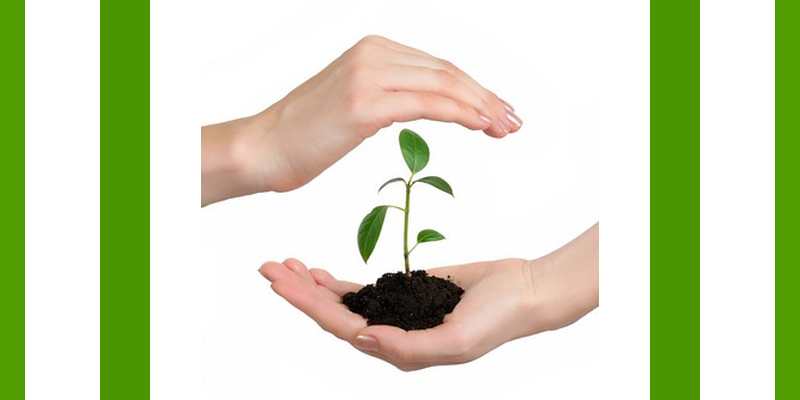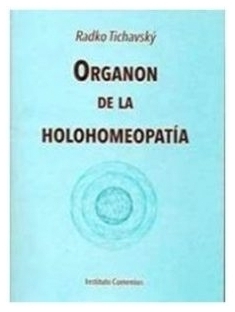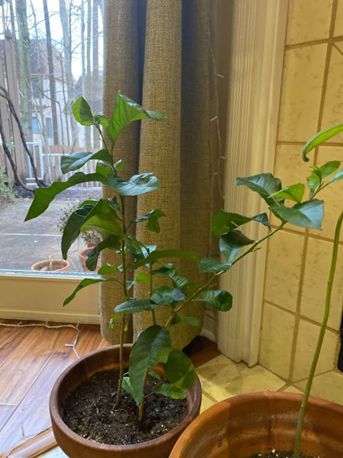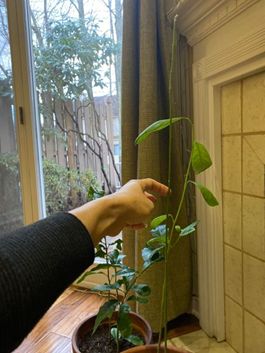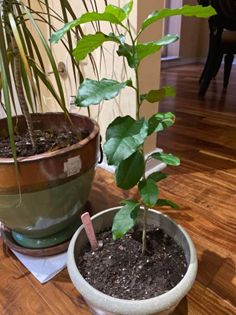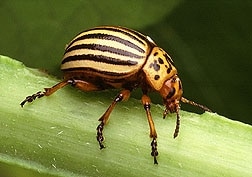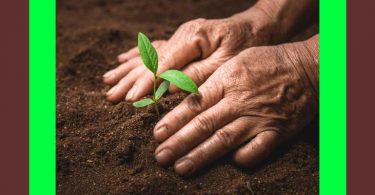Radko Tichavsky is a Czech born Mexican Agrohomeopath. He is a co-founder and director of Instituto Comenius in Mexico and author of Handbook of Agrohomeopathy, 2007 (Spanish) and Homeopathy for Plants, 2009 (Spanish), Organon de la Holohomeopatía and creator and teacher of Holohomeopathy.
He is now offering a one-semester virtual course in Holohomeopathy (in English). You can learn how to define and analyze holons and how to repertorize the specific homeopathic treatment beyond just disease or pest names. You can find out more here: www.icomenius.edu.mx
NEW BOOK: Organon de la Holohomeopatía
Six years in the making, it is the latest book by Radko Tichavsky, researcher on the application of homeopathy in agriculture. This Spanish language book covers homeopathic interventions in agriculture from the holistic view, allowing greater certainty in repertorizations. It addresses a novel concept of metabolic similarity, not only among plants, but also among different species of the animal and plant kingdom. It studies the formation and dynamics of attractors, areas of greater vitality within the holons and coexistence units of different living organisms Holohomeopathy is a fascinating contribution to the application of homeopathy to plants. It allows one to discover a universe of surprising relations in vital dynamism. It puts into the hands of the agricultural producer, a valuable tool for the successful handling of pests and diseases in crops of any size. For ordering or information: [email protected]
Greetings Mr. Tichavsky,
Sawflies (Caliroa cerasi), defoliated some of our pear trees. We don’t want to use toxic chemicals. Is there a natural way to stop them? We live in Anaheim California Zipcode 92812. Here is the rainfall and temperatures:
Summer High: the July high is around 84 degrees
Winter Low: the January low is 46
Rain: averages 14 inches of rain a year
Snow: averages 0 inches of snow a year
Thank you
William Tyler
Radko Tichavsky:
Dear William,
Caliroa cerasi (Pear slug) is a sawfly that has phytophagous larvae. The reproduction of C.cerasi is mostly parthenogenetic (under 2% of males). This reflects lack of selective pressure because of genetic uniformity of the hosts (grafting/cloning propagation of Pyrus).
Rapid increase in population is an advantage for parthenogens, but low genetic diversity limits adaptive potential of C.cerasi, therefore an important long-term strategy is to increase the diversity of Pyrus trees in your area, especially planting the wild varieties.
C.cerasi overwinter in soil and females emerge in spring, insert eggs on undersides of leaves (upper branches usually). In 1-2 weeks they hatch and larvae feed for 2-3 weeks (which leaves holes), drop to the ground and burrow into the soil to pupate. The cycle repeats (in the warmer climates like yours), the 2nd generation causes more severe damage.
Since only some of your trees were affected, they must be developing adaptations – both direct defenses (thicker cuticle and wax layer, trichomes, smaller leaves), and indirect defenses through Herbivore Induced Plant Volatiles that signal other trees, attract sawfly predators and parasites, pollinators. HIPVs are very complex, with up to 200 different compounds in the mix, impossible to mimic.
Trichogramma wasps are C. cerasi egg parasitoids. Their eggs can be purchased from various suppliers and used according to the instruction (see ONE example here https://www.dirtdoctor.com/garden/Wasps-Trichogramma_vq1099.htm).
Trichogramma are habitat-specific, adults feed on nectar, and are attracted to Dianthus caryophyllus, Chamomilla spp, Medicago sativa, Vicia spp, Phacelia tanacetitifolia, Eryngium sp., Fagopyrum esculentum, Anetum graveolens, Lobularia maritima, Menth spp. Trichogramma wasps are excellent “hubs” for your holon because of their connections to more than 400 species of various insects and Araneae through their semiochemicals. Other egg, larvae and cocoon parasitoids, as well as predators (Picromerus bidens), and small mammals (can feed on cocoons) can be attracted by diversifying your holon as well.
Holo-homeopathic solutions aim at diversifying the holon and improving resilience of plants. Arbuscular mycorrhizae preparation beneficial for Pyrus trees were discussed in November 2020 issue.
You need to also supply Plant Growth Promoting Rhizobacteria PGPRs. Here is an interesting fact: Bacillus cereus and Brevibacillus brevis, besides being PGPRs, were shown to have direct insecticidal effect on adult C. cerasi.
You can make living bio-nosode using boiled rice or boiled potato with the roots of one of these plants (that grow in your area): Agave salmiana, Brassica rapa, Hymenocallis littoralis, Tradescantia spathacea, Cystis striatus.
Dynamize to 3-4JT, and apply both on aerial parts, and around the tree trunk – to prevent adults from emerging, and provide rhizosphere benefits. The process of preparation of living bionosodes is described in several previous issues. The same plants can be planted in your holon.
Beauveria bassiana (entomopathogenic fungus) can control adult C.cerasi. The preparation of its bio-nosode has been discussed in three previous issues; however, it is sometimes hard to locate adult C.cerasi. To control egg stage and larvae that produce the most damage based on metabolic similarity, the following options can be used to make TM, and then dynamize it to 5CH-6CH and spray over your trees – and on the soil under to prevent pupation:
- Daucus carota (Whole plant including root and seeds is best for TM, Queen Anne’s Lace, the wild carrot) 6 larvicide, 4 larvistat, 88 pesticide, 27 insectifuge, 22 antifeedant, 82 common metabolites with Pyrus.
- Apium graveolens (seed oil with seed extract for TM); 6 larvicide, 4 larvistat, 88 pesticide, 28 insectifuge, 19 antifeedant, 77 common metabolites.
- Ocimum basilicum (Aerial parts with seeds best for TM): 6 larvicide, 2 larvistat, 7 pesticides, 27 insectifuge, 18 antifeedant, 45 common metabolites.
- Myristica fragrans (seed extract alone, or with seed essential oil for TM); 7 larvicides, 1 larvistat, 60 pesticides, 24 insectifuge, 13 antifeedant, and 28 common metabolites with Pyrus.
Greetings Radko,
The pecan weevil (Curculio caryae) is a very destructive critter that damaged many hickory trees in a neighboring farm. I’m wondering if there is some holistic way we can prevent that from happening to our trees.
Our farm is in Hamilton city in southern Ontario. The mailing code is LOR 2HO. The climate in Hamilton is cold and temperate. There is significant rainfall throughout the year in Hamilton. Even the driest month still has a lot of rainfall. The average annual temperature is 8.4 °C | 47.2 °F in Hamilton. The annual rainfall is 835 mm | 32.9 inches.
Any suggestions would be very welcome!
Audrey Whitehead
Radko Tichavksy:
Dear Audrey,
Generally, weevils emerge from the soil about the time of the gel stage in the hickory trees and attack late-maturing varieties of hickory trees. Several fungi have been found to help against this plague in C. caryae. The most used are two entopopathogenic fungi Beauveria bassiana and Metarhizium anisopliae. The possibility of controlling this pest by means of nematodes of the genera Steinernema has also been investigated, but the control they offer is only half as effective.
As for the holohomeopathic treatment, homeopathic remedies are used which are sources of Docosane (found in fruit of Vanilla planifolia), Tricosane ( found in flowers of Sambucus nigra) Tetracosane (found in spider Tegenaria domestica, Vanilia planifolia or fungus Ganoderma lucidum), Pentacosane (found in root of Glycyrrhiza glabra), Hexacosane (found in root of Glycyrrhiza glabra and Tegenaria domestica), Heptacosane (found in root of Glycyrrhiza glabra and fruit of Vanilia planifolia) Hexacosane (found in Coccinella septempunctata and root of Glycyrrhiza glabra and Vanilia planifolia) Octacosane (found in Apis mellifera, root of Glycyrrhiza glabra or flower of Tilia sp. ) Nonacosane (found in Bombus terrestris and other species of Bombus, in Hypericum perforatum and in Ginkgo biloba) and Triacontane (found in Tillia sp. Vinca minor, Digitalis purpurea, and ant Neoponera villosa, or the Mantis religiosa)
All of the above substances are hormones of attraction for larvae. You can then prepare a homeopathic remedy in low potency for example 6 JT and place it in traps on the level of soil with a mixture of homeopathic remedy with mineral oil to attract the larvae and kill them and leave your trees alone and healthy.
As for homeopathic applications to the tree itself, apply Natrum muriaticum 30 CH and also Zincum metallicum 6 CH, sprayed once a 1 month during the vegetative period.
During the years under attack of the plague, also Lentinus edodes can be applied, first elaborated in mother tincture in ethyl alcohol and then applied in water dynamized at the 6 JT potency.
It is important to select the fruits of Lentinus edodes irregular in shape, with deformities or dark colored “shots” and fruits with dark color or spots. These characteristics show the presence of mycoviruses with the capacity to silence or express resistance genes in the RNA of the trees against the presence of plagues and diseases and to strengthen its defensive system against them.
Another strategy may be to plant late-maturing varieties in preference, because they generally escape significant damage from the pecan weevil.
Dear Mr. Tichavsky,
Our apple orchard was attacked by the codling moth (Cydia pomonella).
We live in Wasco county Oregon – Zipcode 97001. Here’s the climate:
Summer High: the July high is around 85 degrees
Winter Low: the January low is 27
Rain: averages 17 inches of rain a year
Snow: averages 19 inches of snow a year
Can you suggest what we might do to prevent this again next year?
Thank you
Lawrence O’brien
Radko Tichavksy:
Dear Lawrence,
The presence of codling moth in the crop is a sign of a devitalization of the plants and the soil, that is to say of a lack of microorganisms in the soil that have the capacity to fix the nutrients in such a way that they are assimilable for the plant and protect the apple trees.
Due to their similarity in metabolism, the seeds of the plants Apium graveolens and Daucus carota help in the formation of insecticide and larvicide metabolites in the apple. Prepare a mother tincture of Apium graveolens seed and/or Daucus carota seeds, let it stand for a week, dilute it to 6JT potency and spray it on your crop.
There are entomopathogenic fungi that parasitize Cydia pomonella, such as Metarhizium anisopliae that are a common component of the soils in the fields of Walnut trees (Juglans regia) and in the roots of old Quercus sp. trees. Take a soil sample (first 5 cm approximately) from these fields, prepare bionosode at low potency (6 JT) and apply it to the crop.
Beauveria bassiana and Aspergillus flavus found in the roots of Zea mays as a symbiont, and also hosts Bacillus cereus fond in the same plant, are pathogenic bacterium of Cydia pomonella. B. cereus is found in Glycine max, Ananas comosus, Solanum tuberosum, Zingiber officinale, species that also have metabolic similarity with Malus domestica and contributes to the formation of metabolites for defense against pathogens.
Another species that hosts this bacterium is Aloe vera (pulp) and in the algae Grateloupia filicina, Gelidium amansii. In this case, you can prepare a live bionosode: cook a medium sized potato, let it cool, remove the peel and liquefy the potato with any of the plants mentioned above, disinfecting the surface with 30% alcohol (e.g. the root of Zea mays or Glycine max or the pulp of Aloe vera or Gelidium amanssi) with a little tap water and leave it at room temperature for a day, then dilute this liquid in a ratio of 1: 100 and make 500 vigorous succussions (if the volume is large then 500 turns with a wooden stick to the right and 500 to the left) and apply in the form of a spray on the crops.
Cydia pomonella also has pathogens such as Vairimorpha plodiae, Pleistophora carpocapsae, Nosema carpocapsae, Pleistophora californica, Nosema destructor, Beauveria brongniartii, Pleistophora schubergi, Hirsutella sp., Cephalosporium sp., Lecanicillium lecanii, Steinernema carpocapsae, Isaria farinosa, Anagrapha falcifera found in Solidago sp. and Paecilomyces fumosoroseus in Pinus sp.
There are also natural enemies such as Ascogaster quadridentata, Trichogramma chilonis, Trichogramma pretiosum, Trichogramma evanescens, Trichogramma minutum, Trichogramma dendrolimi, Trichogramma semblidis, Eurytoma, Trichogramma embryyophagum, Trichogramma brassicae, Trichogramma pintoi, Encarsia, Trichospilus diatraeae, Encarsia inaron, Trichogrammatoidea lutea, Trichogramma paltneri, Monodontomerus aereus, Trichogramma euproctidis, Brachyplatycerus minutum, Ageniaspis fuscicollis, Trichogramma cacaeciae, Hyssopus pallidus, Perilampus Fulvicornis, Trichogramma carverae, Trichogramma californicum, Eupelmus cyaniceps, Trichogramma stampae, Trichogramma kilinceri, Trichogramma deion, Trichogramma daumalae, Melittobia acasta, Encarsia porteri, Colpoclypeus florus, Brachymeria hammari, Euderus acrobasis, Brachymeria secundaria, Dibrachys lignicola, Monodontomerus minor, Trichogramma principium, Lixophaga variabilis, Trichogramma ivelae, Trichogramma aurosum, mostly wasps that parasitize the eggs of Cydia pomonella. You can make a nosode of one of the natural predators to a 6JT potency and apply it in the crop.
The complementary remedies that are used in the treatment of this symptomatology are Viola tricolor 12 CH (made of flowers) Sophora japonica 12 CH (elaborated from buds or leaves, although the preparation of leaves has less efficiency) and Sambucus canadiensis (prepared from flowers).
Applications are sprayed over the treetops every two weeks alternately, with a little olive oil as a co-adjuvant. It is also very useful to place a bird water dispenser near the trees, as the birds are very effective predators of the larvae (for example Cyanistes spp., Parus spp. and many others.).
Dear Dr. Tichavsky
I have indoor plants. I have two air purifier plants (don’t remember their names) with lower leaves yellowing and falling off with stunted growth, lemon plants stopped growing indoors, avocado (is growing tall without branching), The bell pepper plant has its leaves falling off. Bell pepper gets artificial light during a few hours of evening and night. Other plants get natural light from sun roof in ceiling. Lemon plants are 2-3 years old. The rest I’ve had since July 2020.
Please let me know what I can do to help the plants from dying indoors. Have been using organic potting soil with plant food/fertilizer.
Pepper
Thank you
Dr. Vidhya Udare MS, BHMS,CCH,
Radko Tichavsky:
Dear Dr. Vidhya,
The problems of your plants fall into the category of conditions or pathologies called physiopathies. Plants not only live from nutrition from the soil, they need adequate light conditions (especially Solanaceae like your chili plant). Inside the home this condition is not always fulfilled.
In the case of the Chili plant you can use a homeopathic photosynthetic sensitizer for example Lantana camara 6 CH and add Calcarea phosphorica 6 CH by spraying once a week until the yellowish color of the leaves changes.
Another possibility is to use sodium spotlights (used in indoor crops and left on at night to extend the photosynthetic period and provide the plants with the light they need for proper photosynthesis. It should be noted that sodium spotlights provide the specific light fraction needed by plants and cannot be replaced by a normal spotlight, but you can adapt them or mount them on any home lamp.
The behavior of the avocado is also due to the same lack of light. Additionally, it must be said that the avocado is a tall and leafy deep-rooted tree that can reach a height of 10 meters or more and the same extension has its roots in the soil. Its survival in the house as it grows will become more complicated and will present more and more physiopathies.
There the solution is to go prunning the roots before they are rolled up in the pot and also the branches little by little, to elaborate a species of “bonsai” of avocado. Agrohomeopathy for bonsai is one of the highly specialized branches of agrohomeopathy, perhaps only surpassed by that of orchids.
Root pruning should be done quickly to expose the root for the shortest possible time to air and afterward apply by spray Hypericum perforatum 6 CH and Arnica montana 6 CH over the soil.
In case of avocado it is very important to inoculate Glomus sp., Acaulospora sp. or Gigaspora sp. which are VAM (vascular arbuscular mycorhiza), fungi that are interconnected with the vascular system of the trees to protect them from diseases and help them to make available and absorb nutrients (in case of avocado supply the deficiency of phosphorus that presents).
You should not think that adding homeopathic Phosphorus 6 CH will solve the phosphorus requirements as suggested innocently in the books of popular agrohomeopathy. Making equivalence: the potency 3 CH is equivalent to 1 part per million, and the potency 6 CH then is equivalent to 0.0001 ppm. Thinking about the typical requirements of avocado regarding phosphorus that is in the range of 260-3000 ppm it is clear that it is not possible to talk about homeopathic fertilization as a way to add phosphorus (or other macronutriens) to plants with enough quantity to produce a measurable or observable effect.
Here the collaboration of VAM fungi is necessary. You can look for a big old avocado tree outside and collect some of the surface mulch (first 5 cm of the soil) and add some of this soil containing the spores of the VAM fungi to your avocado pot and this will notably improve its vital performance and the phosphorus deficiency it presents.

